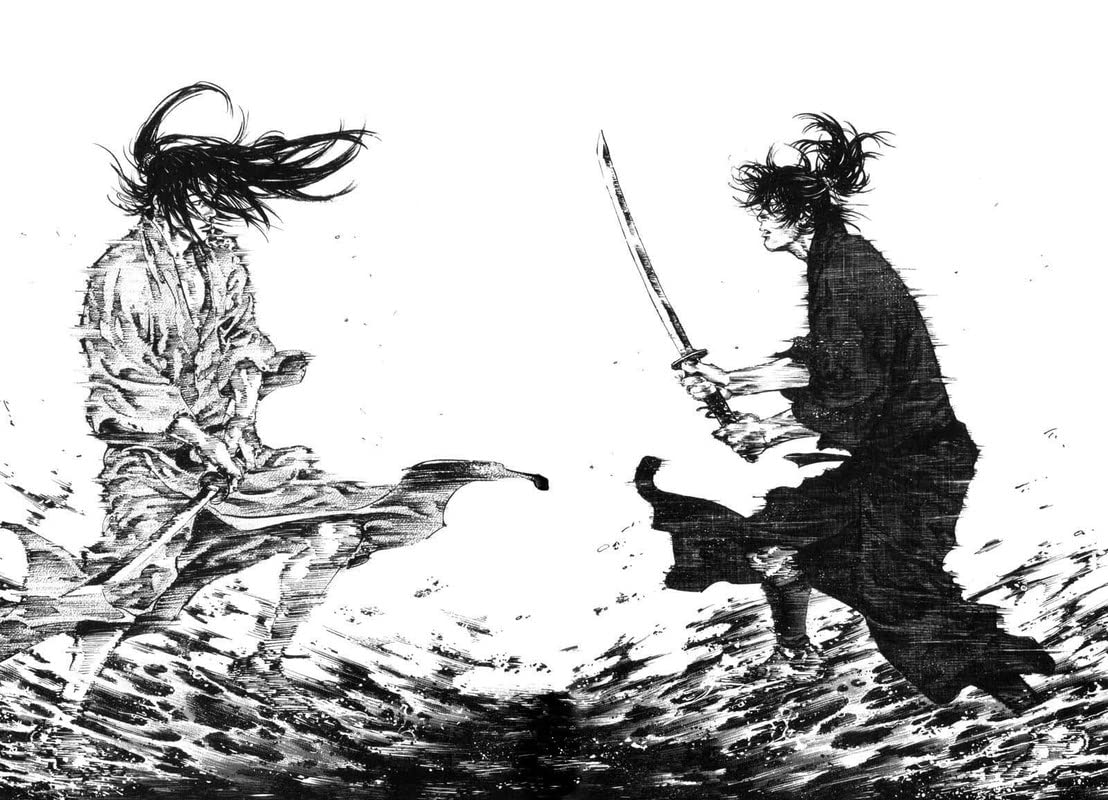Introduction
vagabond manga is a renowned manga series that transcends the boundaries of typical storytelling, offering a profound exploration of the life of Miyamoto Musashi, one of Japan’s most legendary samurai. Created by Takehiko Inoue, Vagabond stands out not only for its gripping narrative but also for its stunning artistry and philosophical depth. The manga, which first began serialization in 1998, has garnered critical acclaim and numerous awards, solidifying its place in the pantheon of great manga.
This article aims to delve into the various facets of Vagabond, including its origins, key themes, artistic style, and cultural impact. By examining these elements, we can gain a deeper appreciation for Inoue’s masterful storytelling and the timeless relevance of Musashi’s journey. Whether you’re a longtime fan or new to the world of vagabond manga, this exploration will illuminate why Vagabond remains a significant work in both literature and art.
1. The Origins of Vagabond Manga
1.1. Historical Context
At the heart of vagabond manga lies the fascinating story of Miyamoto Musashi, a real historical figure who lived during the late 16th and early 17th centuries. Musashi is best known for his unmatched swordsmanship and the creation of a dual-wielding technique that has become legendary. His life was marked by constant challenges and a relentless quest for mastery in the art of combat, which serves as the backdrop for Inoue’s narrative.
The historical context of Vagabond is rich with the cultural and social dynamics of feudal Japan. The era was characterized by samurai honor, conflict, and a pursuit of self-perfection. Inoue artfully weaves these historical elements into the fabric of Musashi’s journey, providing readers with a nuanced understanding of what it meant to be a samurai during this turbulent time. By grounding the story in real events and figures, Inoue not only honors Musashi’s legacy but also invites readers to reflect on the universal themes of ambition, conflict, and the search for meaning.
1.2. Creation and Publication
Takehiko Inoue was inspired to create Vagabond after being captivated by Musashi’s life story. He began his research by diving deep into historical texts and other works that depicted Musashi, including the classic novel Musashi by Eiji Yoshikawa. Inoue’s meticulous attention to detail and commitment to authenticity are evident throughout the series, as he captures the essence of Musashi’s character and the world he inhabited.
The vagabond manga first premiered in the magazine Weekly Morning in 1998 and quickly gained popularity. Its compelling narrative and breathtaking artwork resonated with readers, leading to widespread acclaim. Over the years, vagabond manga has been compiled into 37 volumes and has won multiple awards, including the prestigious Kodansha vagabond manga Award and the Harvey Award for Best American Edition of Foreign Material. Its success has established Vagabond as one of the most celebrated vagabond manga of all time, influencing countless creators and fans alike.
2. Key Themes and Motifs
2.1. The Journey of Self-Discovery
A central theme of vagabond manga is the journey of self-discovery, as Musashi grapples with his identity and purpose throughout the series. Initially, Musashi is portrayed as a brash and reckless warrior, driven primarily by a desire for glory and victory in combat. However, as the story unfolds, he embarks on a transformative journey that challenges his views on honor, strength, and what it means to be a true warrior.
Inoue uses Musashi’s encounters with other characters—such as his rival Kojiro Sasaki—to explore the complexities of human relationships and the search for meaning. These interactions serve as catalysts for Musashi’s growth, prompting him to reflect on his motivations and the true nature of strength. The philosophical discussions woven into the narrative encourage readers to consider their own paths to self-discovery, making Musashi’s journey resonate on a deeply personal level.
2.2. The Nature of Violence and Conflict
Vagabond does not shy away from depicting the harsh realities of violence and conflict inherent in samurai culture. Inoue presents a raw and unflinching portrayal of battles, showcasing the physical and emotional toll that violence takes on individuals and society. Unlike many action-oriented stories, Vagabond emphasizes the moral dilemmas faced by its characters, raising questions about the nature of honor and the consequences of one’s choices.
Musashi’s journey is filled with intense confrontations, but each fight is not merely about triumph; it is also an opportunity for introspection. The series explores the fine line between heroism and brutality, encouraging readers to consider the ethical implications of violence. Inoue’s nuanced approach allows Vagabond to stand out as a thoughtful exploration of samurai life, inviting readers to engage with the deeper philosophical questions surrounding conflict and honor.
2.3. Friendship and Rivalry
Another key theme in Vagabond is the complex nature of friendship and rivalry, particularly as it relates to Musashi’s relationships with other warriors. The dynamic between Musashi and Kojiro Sasaki is particularly compelling, as it encapsulates the duality of admiration and competition. Their rivalry drives the narrative forward, serving as both a source of tension and a catalyst for personal growth.
Inoue masterfully depicts the evolution of these relationships, showcasing how rivalry can coexist with respect and admiration. Through their interactions, readers witness the profound impact that relationships can have on an individual’s journey. Musashi learns valuable lessons about humility, perseverance, and the importance of mentorship, ultimately shaping his character in ways that transcend mere combat skills. This exploration of friendship and rivalry adds depth to the narrative, making it relatable to anyone who has navigated similar dynamics in their own lives.
3. Artistic Style and Techniques
3.1. Visual Storytelling
Takehiko Inoue’s artistic style is one of the defining features of Vagabond, contributing significantly to the series’ impact. His detailed illustrations bring the world of feudal Japan to life, capturing the beauty of landscapes, the intricacies of samurai armor, and the raw emotions of characters. Inoue employs a dynamic use of paneling and composition to create a sense of movement and urgency, particularly during fight scenes.
One of the most striking aspects of Inoue’s art is his ability to convey emotion through facial expressions and body language. Readers can feel the weight of Musashi’s struggles and triumphs through meticulously crafted illustrations. The combination of detailed backgrounds and expressive character designs enhances the storytelling, allowing readers to immerse themselves in Musashi’s world. Inoue’s visual storytelling elevates Vagabond beyond a simple vagabond manga, transforming it into a work of art that resonates with readers on multiple levels.
3.2. Influence of Traditional Japanese Art
Inoue’s artwork is heavily influenced by traditional Japanese art forms, which adds a unique layer of depth to Vagabond. His use of ink and brush techniques reflects the aesthetics of ukiyo-e, a genre of Japanese woodblock prints that often depict scenes from history and folklore. This connection to traditional art not only enhances the visual appeal but also grounds the narrative in its cultural context.
Moreover, Inoue often incorporates elements of nature, such as cherry blossoms and tranquil landscapes, to symbolize Musashi’s internal journey and the passage of time. These motifs enrich the storytelling, creating a harmonious balance between the brutal realities of combat and the serene beauty of the world. By blending traditional art with contemporary vagabond manga techniques, Inoue crafts a distinctive visual language that sets Vagabond apart from other works in the genre.
4. Cultural Impact and Legacy
4.1. Reception and Awards
vagabond manga has received widespread acclaim from both critics and readers, solidifying its status as a masterpiece within the vagabond manga genre. The series has won numerous awards, including the Kodansha Manga Award and the Harvey Award for Best American Edition of Foreign Material. Its success has not only highlighted Takehiko Inoue’s talent as a storyteller and artist but has also raised the profile of manga as a legitimate form of artistic expression.
The impact of Vagabond extends beyond its awards and sales figures. It has inspired a generation of vagabond manga artists and writers, influencing the way stories are told within the medium. Inoue’s ability to blend historical accuracy with compelling character development has set a standard for narrative depth in manga, encouraging others to explore similar themes and artistic styles.
4.2. The Legacy of Musashi and vagabond manga
The legacy of Miyamoto Musashi is intricately tied to the cultural impact of Vagabond. Musashi’s life and philosophy continue to resonate with audiences, serving as a source of inspiration for those seeking to navigate their own paths. The themes of self-discovery, the complexity of human relationships, and the ethical considerations of violence remain relevant in contemporary society.
Vagabond has also contributed to the ongoing fascination with samurai culture in popular media, paving the way for a renewed interest in historical narratives. The series serves as a reminder of the enduring appeal of stories rooted in authenticity and moral complexity. As new generations discover Vagabond, Musashi’s legacy is likely to persist, inspiring individuals to reflect on their own journeys and the values that define them.
Conclusion
Vagabond is more than just a vagabond manga; it is a profound exploration of the human experience through the lens of one of Japan’s most iconic figures. Through its rich storytelling, stunning artistry, and philosophical depth, the series captures the essence of what it means to be a hero in a complex world. Takehiko In




